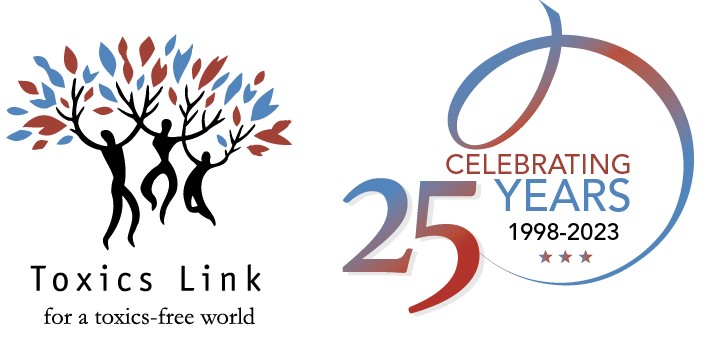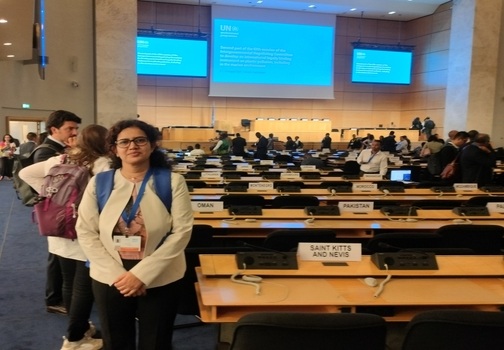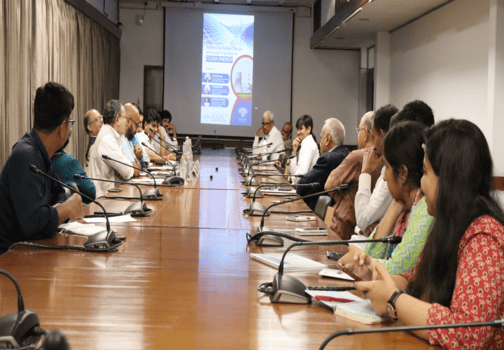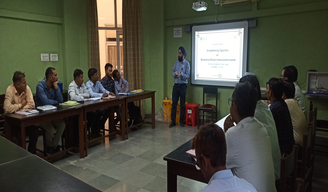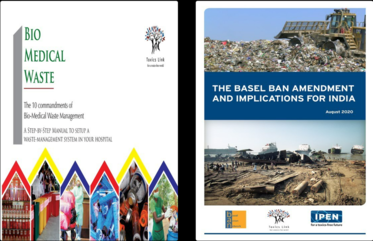Scientific Disposal of E-Waste
GOVERNMENT OF INDIA
MINISTRY OF ENVIRONMENT, FORESTS AND CLIMATE CHANGE
LOK SABHA
UNSTARRED QUESTION NO: 1152
ANSWERED ON: 25.07.2022
Scientific Disposal of E-Waste
Manoj Rajoria
Will the Minister of ENVIRONMENT, FORESTS AND CLIMATE CHANGE be pleased to state:-
(a) the quantum of e-waste generated along with the rate of their increase in the country including metropolitan cities along with the quantity disposed scientifically during the last three years and the current year, year-wise;
(b) the details of schemes being implemented for the recycling of e-waste;
(c) whether the production companies are responsible for scientific disposal of waste collected as used mobile, laptop, printer, fridge, TV, microwave, LED, air-conditioner etc. and various types of electrical and electronic items under the E-Waste Management Act, 2016 and if so, the number of plants set up by local and multinational companies so far;
(d) the details of the companies in the country including Rajasthan and their extension thereof; and
(e) the measures taken by the Government to prevent the generation of e-waste in the country?
ANSWER
MINISTER OF STATE IN THE MINISTRY OF ENVIRONMENT, FOREST AND CLIMATE CHANGE
(SHRI ASHWINI KUMAR CHOUBEY)
(a) The quantum of e-waste generated along with the rate of their increase andprocessed scientifically through authorised dismantler/recycler out of the total e-waste generated in the country from twenty-one (21) types of electrical and electronic equipment (EEE) notified Under the E-Waste (Management) Rules, 2016 during the last three years is given below:
Financial Year Generation
Increase Quantity of e-wasteprocessed
(Tonnes) (%) (Tonnes)
2017-18 7,08,445.00 N.A. 69,414.0
2018-19 7,71,215.00 8.86% 1,64,663.0
2019-20 10,14,961.21 31.60% 2,24,041.0
The input data of e-waste generated is collated on national level only.
(b) Under the E-Waste (Management) Rules, 2016, producers of EEE have been given collection targets for collection of e-waste generated from the end of life of their products. The collection targets are based on the generation from the previously sold EEE or based on sales of EEE as the case may be. The producers are further required to ensure environmentally sound recycling of such collected e-waste through authorised dismantlers/recyclers only. For ensuring environmentally sound dismantling/recycling of e-waste, Central Pollution Board (CPCB) has given guidelines as required in the said rules. The guidelines contain details on requirements of equipment, facilities and operations/processes for scientific and environmentally sound recycling. The guidelines have prescribed dos & don’ts and effluent as well as emission standards for various parameters of concern. State Pollution Control Boards (SPCBs)/Pollution Control Committees (PCCs) are the designated authority for grant of authorization to the dismantlers and recyclers of e-waste after ensuring compliance of guidelines. Any entrepreneur who is interested in doing dismantling/ recycling can set up units. The number of such units are continuously increasing. The details are given in the table below:
Financial Year Number of Authorized Dismantlers/Recyclers Total Capacity (Tonnes per Annum)
2016-17 178 4,38,086
2017-18 275 5,10,950
2018-19 312 7,82,080. 62
2019-20 407 11,10,103.22
2020-21 468 13,85,932.22
2021-22 472 14,26,685.22
Further, Ministry of Electronics and Information Technology (MeitY) has informed that they have amended the existing Scheme for Promotion of Manufacturing of Electronic Components and Semiconductors (SPECS) to provide support for setting up of state-of-art e-waste recycling facilities for extraction of precious metals from e-waste components. The scheme was envisioned for financial incentive of 25% on capital expenditure.
(c) & (d) Producers of notified EEE as listed in the Schedule-I the E-Waste (Management) Rules, 2016 have been assigned responsibility for managing their end of life products under the provision of Extended Producer Responsibility (EPR) through annual collection targets. Under the above said rules, two categories of EEE, namely ‘information technology and telecommunication equipment’ such as centralized data processing, mainframes, minicomputers, personal computers, laptops, printers, use terminals, cellular phone, etc. and ‘consumer electrical and electronics equipment’ such as television sets, refrigerator, air conditioner, washing machine and fluorescent and other mercury containing lamps at the end of their life have to be managed by the producers. As per the said rules, the producers of notified EEE are required to obtain EPR Authorization (EPRA) which is an instrument for managing Extended Producer Responsibility with EPR implementation plans and targets outlined in the EPRA.
As on date there are 2061 EPR Authorized Producers 472 authorized dismantlers/recyclers in the country having an annual processing capacity of 14,26,685.22 Tonnes including Rajasthan. In Rajasthan there are 24 EPR Authorized Producers and 24 authorized dismantlers/ recyclers exist having processing capacity of 83,604 Tonnes.
(e) For reduction in e-waste generation, the E-Waste (Management) Rules, 2016 has provisions for its refurbishment. As per the rules, refurbishment means repairing of used EEE as listed in Schedule-I for extending its working life for its originally intended use and selling the same in the market or returning to owner. The refurbishment of the EEE will lead to extension in working life of a EEE and hence reduction in generation of e-waste. Under the said rules, the refurbishers of e-waste are getting authorization from the concerned SPCBs/PCCs and are required to fulfil the responsibilities as specified under the rules.
